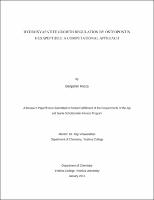Please use this identifier to cite or link to this item:
https://hdl.handle.net/20.500.12202/4001Full metadata record
| DC Field | Value | Language |
|---|---|---|
| dc.contributor.author | Recca, Benjamin | |
| dc.date.accessioned | 2018-10-18T17:31:04Z | |
| dc.date.available | 2018-10-18T17:31:04Z | |
| dc.date.issued | 2013-01 | |
| dc.identifier.uri | https://hdl.handle.net/20.500.12202/4001 | |
| dc.identifier.uri | https://ezproxy.yu.edu/login?url=https://repository.yu.edu/handle/20.500.12202/4001 | |
| dc.description | The file is restricted for YU community access only. | en_US |
| dc.description | The file is restricted for YU community access only. | |
| dc.description.abstract | Hard tissue gives the body its shape and structure and literally provides its backbone. Mineralized tissue, including bone and tooth enamel, is composed of minerals whose hardness and brittleness can be attributed to its atomic arrangement. Carefully regulated crystallization of mineralized tissue is essential for proper function. The aggregation of atoms into complex yet highly ordered minerals is called mineralization1 . Inorganic crystallization naturally occurs either through the interaction of melted materials in high temperature and pressure conditions or through the precipitation of materials dissolved in aqueous solutions. Biomineralization refers to this process when performed by organisms. The “bio” term signifies that a biopolymer catalyzes the reaction by lowering the high activation energy of the reaction, thereby eliminating the need for extreme temperature, pressure and concentration otherwise necessary to form the minerals by purely inorganic means.2 Furthermore, biomineralization occurs on the micro time scale, while the geological cycling of mineral elements takes place over millennia. | en_US |
| dc.description.sponsorship | Jay and Jeanie Schottenstein Honors Program | en_US |
| dc.publisher | Yeshiva College | en_US |
| dc.rights | Attribution-NonCommercial-NoDerivs 3.0 United States | * |
| dc.rights.uri | http://creativecommons.org/licenses/by-nc-nd/3.0/us/ | * |
| dc.subject | Hydroxyapatite -- Structure -- Research -- Methodology | en_US |
| dc.subject | Osteopontin -- Structure -- Research -- Methodology | en_US |
| dc.subject | Proteins -- Structure -- Research -- Methodology | en_US |
| dc.title | HYDROXYAPATITE GROWTH REGULATION BY OSTEOPONTIN HEXAPEPTIDES: A COMPUTATIONAL APPROACH | en_US |
| dc.type | Thesis | en_US |
| Appears in Collections: | Jay and Jeanie Schottenstein Honors Student Theses | |
Files in This Item:
| File | Description | Size | Format | |
|---|---|---|---|---|
| Benjamin-Recca.pdf Restricted Access | 2.91 MB | Adobe PDF |  View/Open |
This item is licensed under a Creative Commons License

